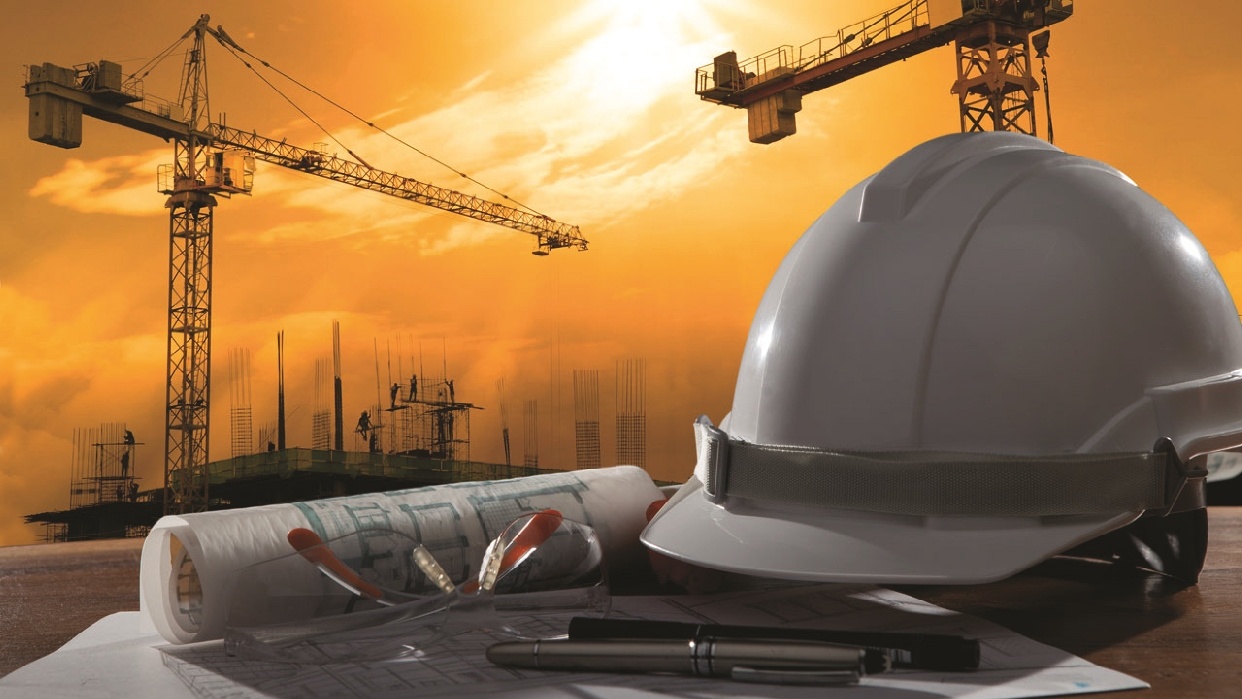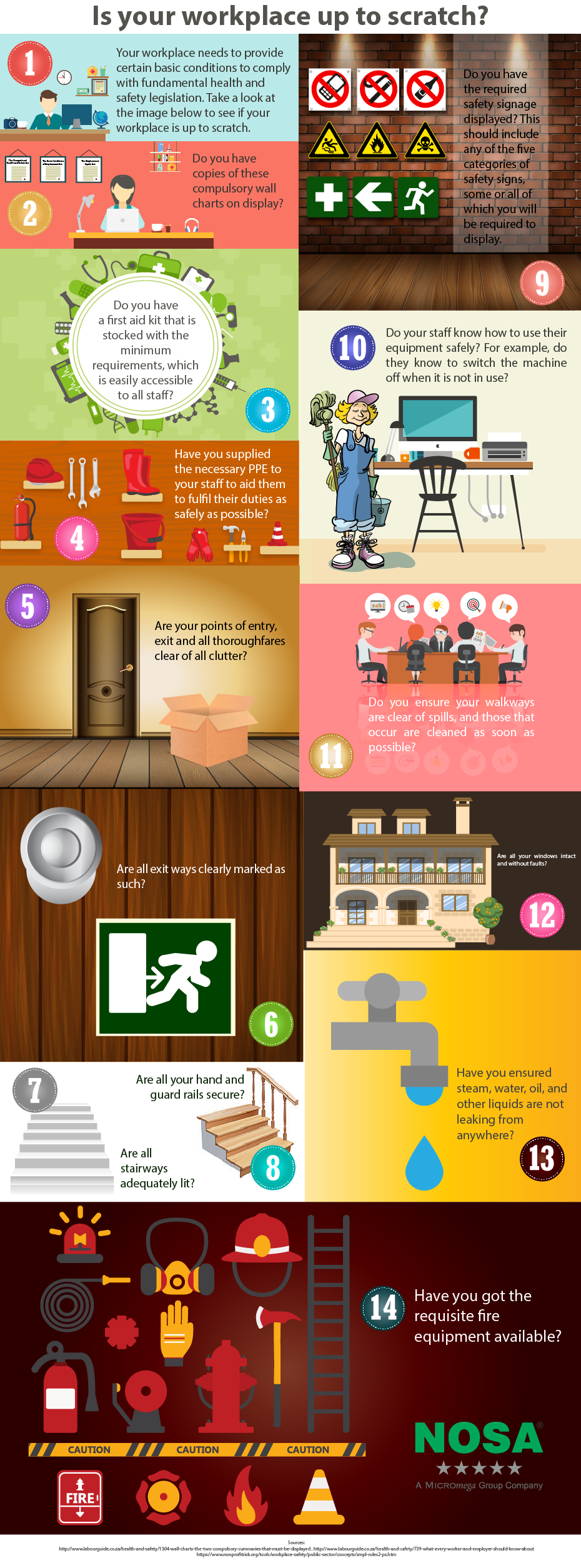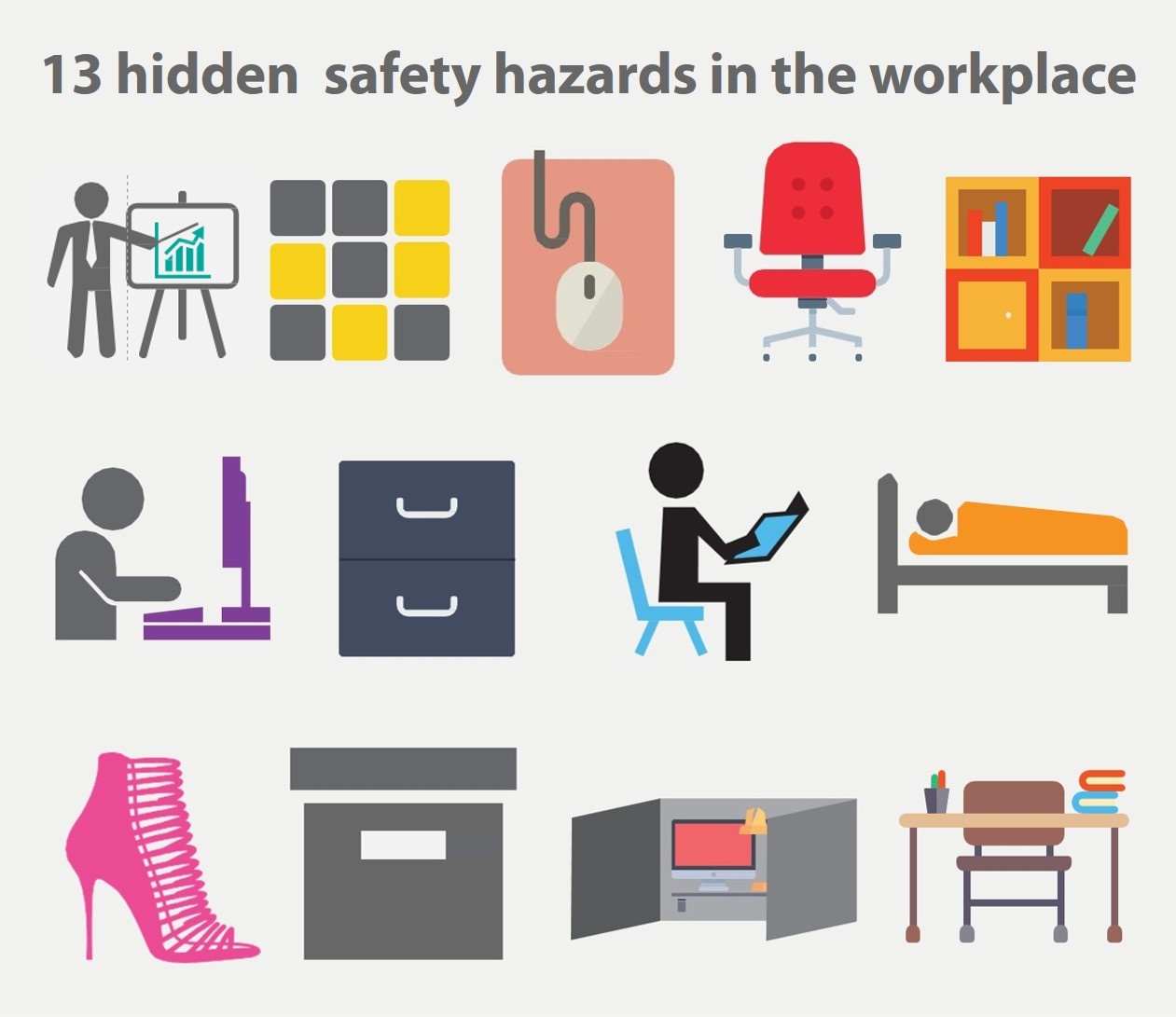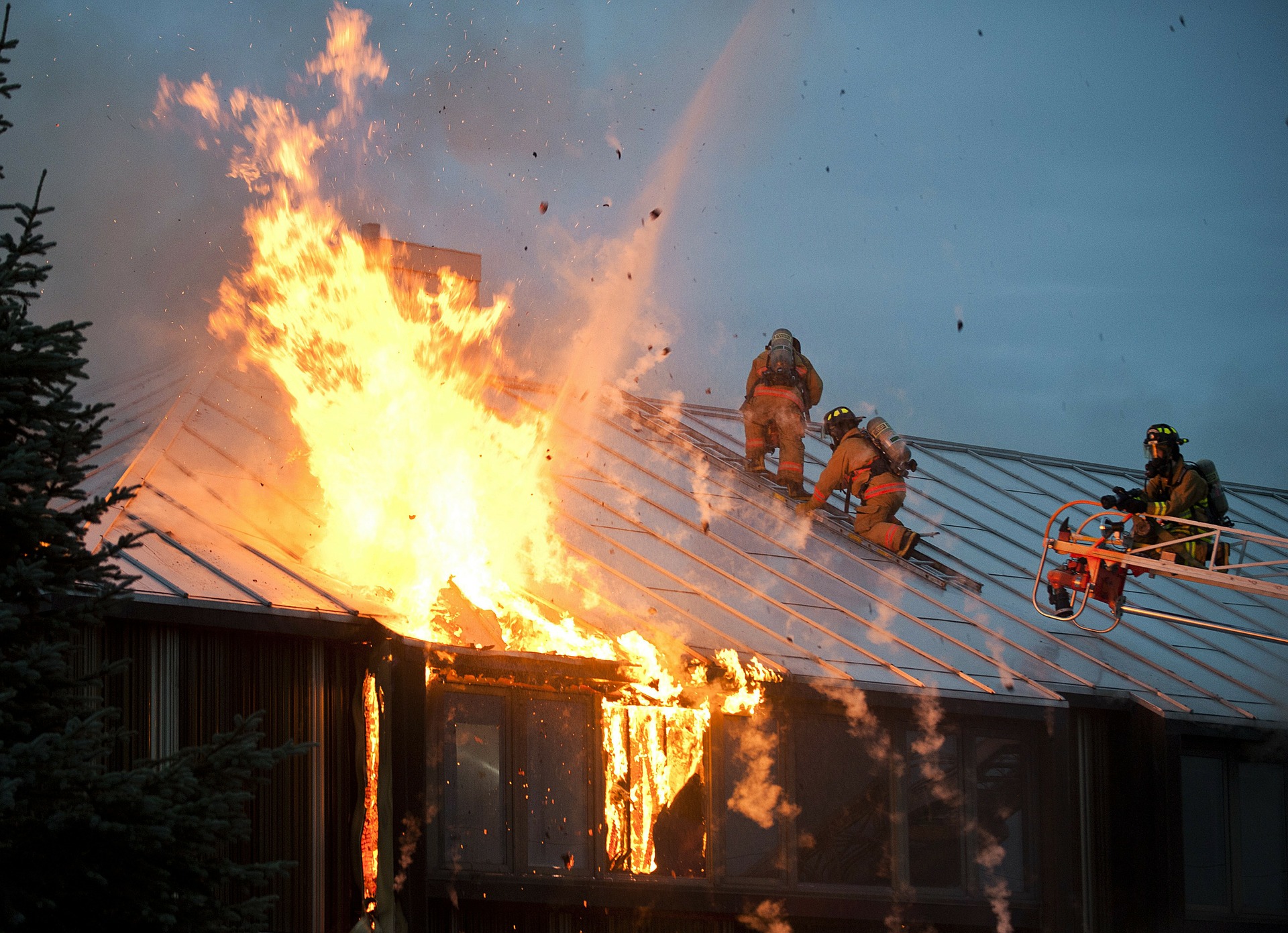So you’re thinking of pursuing a career in health and safety. But, where’s the start line? Or are there several starting options? Must you decide from the get-go how you wish to specialise (i.e. focusing on conducting audits)? The following blog breaks down the process you’ll most likely follow, from decision, to studying, to working, and finally to how your role fits in the bigger picture of an organisation.
Topics: Career in Health and Safety, HSE
Your workplace needs to provide certain basic conditions to comply with fundamental health and safety in the workplace. Take a look at the image below to see if your workplace is up to scratch.
Topics: Career in Health and Safety
Need a quick reference guide to maintain your office’s health and safety compliance? Use the following checklist to stay on top of your legal obligations.
Topics: Career in Health and Safety
We all do it – you need to reach something on the top shelf in your cupboard, the ladder’s outside in the garage, so you grab the nearest chair and climb on. Mostly, we come down from the chair without a problem. But sometimes, we slip and fall, possibly injuring ourselves quite badly.
The same behaviour sometimes carries through to the workplace, to varying degrees. Here’s a challenge for you. Below are five examples of clear safety violations in the workplace. Take a look at each picture, and in the form that follows, let us know how each worker is breaking health and safety rules. You can include advice and tips on how the employees should have acted.
Spread the safety word
Once you have completed the form, visit our Facebook page and post safety violations you’ve noticed in your own day-to-day duties that need fixing. Hashtag it #SafetyFirst, and include a message on what should have been done in the situation. Tag us @NOSAtweets if you are using your personal account on Facebook or Twitter.
Topics: Career in Health and Safety
Nobody at your facility has been hurt in more than a year. Weekly inspection forms are returned with no non-compliances. Are the facility’s safety plans really working that well or is it just luck? Conducting a safety audit is one of the proven ways to answer that question.
Even if you think your building is at low risk, a regular health and safety audit, carried out by a competent person, will help you decrease the risk of accidents in the workplace. Rather than wait for a surprise visit from the Department of Labour, be prepared, know your risks, ensure you have your legal obligations covered, and use the following checlist to see if you’re due for a health and safety audit.
General workplace conditions
Do you answer ‘no’ to any of the following questions?
• I and my team have identified ALL hazards that may cause harm, injury or ill health to someone in our workplace
• We are conducting hazard identification regularly, especially every time there has been a change in the workplace
• We have documented ALL hazards in the workplace
• We have assessed the risk level of ALL the hazards
• We have documented our risk assessment
• We have taken action to eliminate or minimise any hazard or risk, and documented these
Topics: Career in Health and Safety
Are you aware how severe health and safety non-compliance penalties can be? Do you know how you are at risk of incurring these penalties, according to the Occupational Health and Safety Act (OHS Act)? Maybe? Maybe not? And here lies the problem. Sometimes, it isn’t wilful disobedience of health and safety legislation (although sometimes it is). Sometimes, companies will find themselves breaching the finer details of the OHS Act or SHE legislation entirely due to lack of knowledge.
Topics: Career in Health and Safety
Your CEO could go to jail for health and safety non-compliance
It’s what everyone wants to know – where, and with whom, does the buck stop? When it comes to workplace health and safety, this question is exceptionally important because we all need to know how we are legally accountable for all our actions, and our options and obligations should an employee or colleague be hurt (or worse – die) as a result of these actions.
Today’s blog breaks down each and every person responsible for comply with health and safety legislation.
Topics: Career in Health and Safety
The hierarchy of controls - why your hard hat won't save you
Or at least, your hard hat alone won’t save you. Today we’d like to take the opportunity to discuss the benefits of a ‘hierarchy of controls’, and how it can be used to create safe systems of work in your workplace. Traditionally, a hierarchy of controls has been used as a means of determining how to implement feasible and effective control solutions. This can be done in a few steps.
The hierarchy on control is, of course, not only of use to directors. It is a method for choosing risk control measures that can be used by employees on every level of a company.
For example:
- Directors can use the hierarchy to create safety strategies to be carried down through the company.
- Senior management can use the hierarchy to train workers in the safety strategies and be assured that workers are competent and capable in those control measures.
- Workers use the control measures on a day-to-day basis in their workplace.
Topics: Career in Health and Safety
[QUIZ] Can you recognise Hidden Hazards in the workplace?
Last month we shared with you the 13 workplace hazards that you may not be aware of. Today, we’d like to test your knowledge on that information. Take the following quiz, and see how much you remember – and how many hidden hazards may still be present in your own workplace.
Topics: Career in Health and Safety
If you suspect a fire or hear a fire alarm
- Never ignore a fire alarm. Your first reaction should be to grab your keys, alert the people around you, and go.
- Act immediately but try to stay calm.
- Stay low in case of smoke or fumes.
- Don’t waste time searching for valuables.
- Do not attempt to extinguish a fire unless you are trained to do so. Leave firefighting to the professionals.
- To alert anyone who may not be aware, shout, ‘Fire! Everyone out!’
- Feel the doorknob or higher on the door with the back of your hand. If it feels hot, fire may be on the other side of the door, so keep it shut. Stuff clothing, towels, or newspapers in the door’s cracks to keep the smoke out.
- Even if the door is cool, open it slowly. Stand low and to one side of the door, in case smoke or fumes seep around it.
- If heat and smoke come in, slam the door tightly, stuff clothing, towels, or newspapers in the door’s cracks to keep smoke out, and use your alternative way out (if you have one).
- If you will open a window for your escape, be sure the other windows and door(s) in the room are closed tightly. Otherwise, the draft from the open window may draw smoke and fire into the room.
- If the hallway is clear of smoke, walk in a calm manner to the nearest fire exit and evacuate the building.
- Use the stairs – NEVER use elevators. Elevators are normally tied to a fire detection system and are not available to occupants once the alarm sounds.
- Stay low to avoid smoke, fumes, and super-heated gases that may have entered.
- Close doors as you leave to confine the fire as much as possible.
- If the alarm is not already sounding, pull the fire alarm on your way out of the building. If there is no alarm to activate, yell ‘fire’ as you leave.
- Move quickly to an open area, away from buildings, trees, power lines, and roadways. If your building has a designated assembly area and it is safe, head there.
If you’re trapped in a room
- Close as many doors as possible between you and the fire. Seal cracks around the door to prevent smoke from entering. If you have a working phone,phone emergency services and report the name of your building or address, the room number, and the fact that you are trapped and need to be rescued. Stay on the phone until the emergency services arrive at your room.
- Be prepared to signal from a window but do not break the glass unless absolutely necessary (outside smoke may be drawn in). Open the window a few inches for fresh air and hang a brightly coloured cloth or bed sheet out the window to alert the emergency services to your location. If you have a flashlight, use it to signal at night.
If you are trapped on the upper floors of a tall building
- Put a wet cloth under closed doors to help prevent the spread of smoke.
- If you have a working phone,phone emergency services and report the name of your building or address, the room number, and the fact that you are trapped and need to be rescued. Stay on the phone until the emergency services arrive at your room.
- If you must escape through a window and there is no adjoining roof or fire escape, hang from the window by your hands and drop to the ground to shorten the height of the fall.
- If you must break a window to crawl out, use a chair, a drawer, or a similar object. Throw a blanket over the windowsill to help protect you from broken glass while crawling out.
If caught in smoke
Drop to your hands and knees, and crawl or crouch low to the floor, watching the base of the wall as you go. Avoid crawling on your belly, because heavier toxic gases can settle and form a thin layer on the floor. Hold your breath as much as possible and breathe shallowly through your nose, using your blouse or shirt as a filter.
If you are forced to advance through flames
- Hold your breath. Move quickly, covering head and hair. Keep your head down and close eyes as often as possible.
- If clothing catches fire, stop where you are. Drop to the ground, and cover your mouth and face with your hands to protect them from the flames. Then roll over to smother the fire.
- Assemble at the area designated in your departmental Emergency Action Plan (EAP), if applicable, and remain there until instructed by a safety officer or the fire department that it is safe to re-enter the building.
- If there is no designated assembly point, maintain a safe distance from the building to allow ample room for emergency personnel and equipment to access the building.
- Call emergency servicesfrom a safe place and report the nature and location of the fire.
- Follow directions of emergency personnel, if present.
- Do not go back inside the building until instructed by a safety officer.
If you encounter a small fire
- A small fire is defined as wastebasket-size or smaller.
- Under special conditions, you can extinguish small fires before there is a full evacuation, if you have been trained and feel comfortable using an extinguisher. The fire must be truly small and controllable and you need both the right fire extinguisher and knowledge of how to use it.
- Never enter a smoke-filled room, even if it looks free of fire.
- In any case, constantly evaluate and be ready to evacuate if the fire cannot be easily controlled.
Under all circumstances
- Alert people in the area.
- Activate the fire alarm.
- Maintain an accessible exit.
- Avoid smoke and fumes.
- Smother the fire or use the correct fire extinguisher.
- Aim the extinguisher at the base of the fire. Only trained personnel should use fire extinguishers. Use fire extinguisher on small fires only if it is safe to do so; otherwise get out.
- Remain available to answer questions from safety officers or the fire department.
- Report all fires to a supervisor.
Fire extinguisher instructions
| P – PULL safety pin from handle. A – AIM (nozzle, cone, horn) at base of the fire. S – SQUEEZE the trigger handle. S - SWEEP from side to side (watch for re-flash). |
[Infographic] What to do if you're in a building on fire
Topics: Career in Health and Safety














